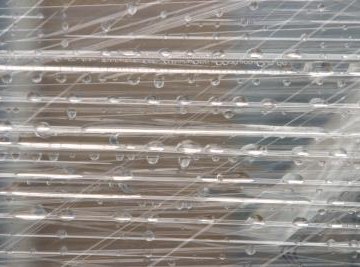
Polyethylene is a plastic material known technically as a thermoplastic. Thermoplastic means that when it is heated it turns to liquid rather than burning, and when cooled takes on the properties of a solid. Polyethylene is used in numerous applications ranging from plastic grocery bags to heavy duty plastic containers.
Features
Polyethylene, like all plastics, is a polymer based material, meaning that it is comprised of long chains of identical molecules. The polyethylene molecule specifically is comprised of two double bonded carbon atoms that each has two hydrogen atoms connected to it. Due to its repetitive nature, polyethylene can take many structural forms.
Function
In its liquid state, polyethylene serves as a material that can be molded, injected, and cast in varying thicknesses and shapes to create many different usable products. In its solid form, polyethylene serves many purposes. Common olyethylene plastic items include food containers, appliance casing and trash bags.
History
Polyethylene was first synthesized by Hans von Pechmann, a German chemist who discovered it by accident when heating diazomethane. It was not until 1939 that a purposeful method of production for polyethylene was introduced by Michael Perrin and production of the low density polyethylene variant was released for industrial uses.
Benefits
Polyethylene has several desirable engineering characteristics. Polyethylene posseses a crystalline structure and as such does not dissolve at room temperature. Also, polyethylene is extremely chemically resistant, making it perfect for storage of caustic materials and for use as chemical lab ware in research facilities. Polyethylene is also commonly used in situations when metallic materials are not desirable such as when corrosion due to dissimilar metals is an issue.
Significance
Given that it is highly resistant to chemical caustics and solutes, polyethylene remains a durable reusable material for countless plastic formed applications. Polyethylene also is recyclable and as such helps reduce landfill production and lower the materials costs of enterprise businesses and home consumers alike. Its versatility makes it a material that society uses extensively and would be hard pressed to find a replacement for.
About the Author
Gabriel Dockery began writing in 2009, with his work published on various websites. He is working toward a Bachelor of Science in neuroscience in a transfer program between Ivy Tech College and Indiana State University.
Photo Credits
Hemera Technologies/AbleStock.com/Getty Images
